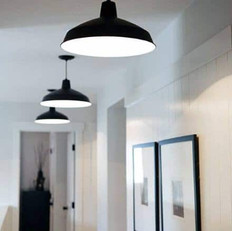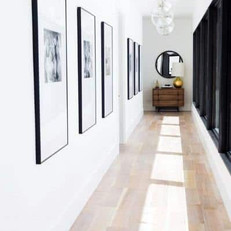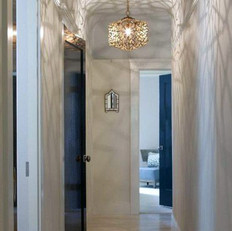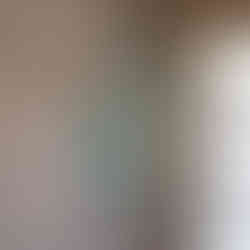Lighting - Designer secrets.
- Lisa Christie
- Aug 23, 2021
- 5 min read
Updated: Aug 29, 2023
If you don’t have enough lighting, there is NO paint colour that will save you! – don’t expect your paint to be a miracle worker... Before you spend money on paint, spend SMART money on lighting first.
I'm sure I wont get any argument from you when I say that colour palette is one of the most important design decisions you’ll need to make when decorating a home. From paint colour to fabrics and finishes, colour can have a large effect on how any home looks and feels.
For a lot of people, lighting is an afterthought. It's easy to be focused on the big-picture stuff, but it's important to think about these smaller details in the early stages of a project, before it's too late.
Lighting is the most neglected element in most spaces I have noticed all too many times when I am providing Interior Design advice. Especially refurbishments of 1980's-1990's homes where the existing lighting is both dated and inefficient. Many clients have not considered the huge impact that a lighting upgrade could have on the final result. One of the first questions I ask my client is - "Are you planning a lighting upgrade?" This can have a huge impact on the colour selection process and eventual outcomes / resulting wow factor (or lack thereof) for interior spaces. Don't leave this important consideration out of your planning and budget!
Naturally, if I have great levels of natural or artificial light to work with, it opens up the colour options to its maximum, which allows me to be more creative and provide the more adventurous colour schemes and more adventurous wall finishes and decor. Good lighting makes a massive difference! This is a designer secret - so shhh, don't tell anyone I told you!
Have you ever walked into a room and thought it looked bland and felt a little unfinished? Playing it too safe with your paint colours and decorative elements is likely the main culprit. Sometimes begin brave and stepping out of your comfort zone really pays off. Good natural light allows you to be a little more creative with the selections.

USE THE RIGHT BULB
You shouldn’t have bulbs that take five minutes to get to their full power (a favourite of husbands worldwide). By the time the light starts working at full force, you’ll probably be on your 2nd glass of wine and on the other side of the house.
LEDs are a popular choice thanks to their energy-efficiency and lifespan. You can get them in three colour temperatures – warm white, cool white and daylight, I prefer warm light to provide a cosy atmosphere for domestic projects. And if you have the option of a dimmer for overhead lights, I would definitely tick that box.
DESIGNER TIP: If you have a lamp or light fitting in your house that isn't quite right....simply change the bulb and try a lower wattage or perhaps a filament globe. You will get instant mood and comfort from a warm, low wattage bulb when compared to a cool white globe. Try it and see a huge difference in atmosphere and mood in your home!
LAYER THE LIGHTING - USE THE THREE TYPES
The three types of lighting are: ambient, accent and task lighting. All three should all be considered when designing your spaces for new builds or renovations alike.Take a layered approach to lighting with different light sources across different levels to create ambience and interest in a room.
AMBIENT
Ambient lighting is also called general lighting, and it's the most basic of the three types of lighting. It's the natural light from your windows, and the lighting that substitutes for natural light such as down lights or the main sources of light in your home.
ACCENT
The second layer of light is known as the accent lighting layer or “decorative” layer because it allows you to highlight points of interest in your interiors such as architecture, artwork, or any other features that can’t be made more prominent just with ambient lighting. Accent lighting is most effective when the light creating the focal point is three times as bright as the surrounding space. Accent lights also act as secondary light sources to chase away the gloom and fill in the places where ambient light can’t reach. Types of fixtures typically used for accent lighting include wall sconces, art lights, uplighting, table lamps or strip lighting under cabinets.
TASK LIGHTING
Consider what tasks you may be undertaking in each room where lighting can affect or aid you. Cooking requires task lighting, therefore a combination of bright downlights and recessed lighting, in cabinets and above stove tops, is useful. For reading, flexible and directional lighting aimed away from you is better.
Have you ever been in a space and the lighting seems harsh and makes its inhabitants look less than appealing? It may be because these locations are lacking multiple layers of lighting, causing unflattering shadows instead of even washes of light. Having layers of lighting should be a big consideration when it comes to your own home where a balanced and comfortable ambiance should be a priority.
Dimmers will quickly become your new best friend, providing an energy efficient and effective way to quickly change the atmosphere and warmth of a room.
Use lighting to make the most of a room's size and shape –uplighting makes a room feel larger, low hung pendants will create an illusion of height and clusters of lighting make large rooms seem cosier. Lighting when layered will provide brighter functional lighting when necessary as well, emphasis and mood lighting and general ambiance when it is needed.

HOW TO PLACE DOWNLIGHTS EFFECTIVELY
Downlights should be positioned strategically. Placing them in a standard grid pattern on the ceiling will just light the floor. You want to light the walls,artworks and other focal points, so arrange them around the outside of the room and make sure they're on an adjustable gimble so you can angle them however you like. It doesn't matter if the fittings aren't evenly spaced or symmetrically placed.Remember that recessed lights are functional - they should be placed with the end result in mind. Be sure to keep any downlights at least 700-800mm away from the edge of the ceiling where it meets the wall and avoid getting too close to ceiling fans. This will help to avoid unsightly shadows and unnecessary light wastage.
PENDANT LIGHTS ARE YOUR CHANCE TO BE CREATIVE.
Generally, the larger the room, the bigger you can go with your pendants. I prefer to overscale than have them too small, and make a whimsical statement with one big pendant in a smaller space. Decorative lights are like the 'earrings' for an interior and can make a huge difference if carefully planned. Here's a few of my favourites from previous projects:
FUNCTIONAL AND BEAUTIFUL
Midnight bathroom breaks are made worse with harsh lighting that causes temporary blindness upon flicking a switch. Invest in directional floor level lighting in hallways, staircases and the bathroom to create subtle warmth that is both practical and beautiful. Lighting that looks great and has excellent functional quality is always money well spent in my opinion...
TRACKS AND STRIP LIGHTING
For modern interiors, I am a big fan of simplistic lighting techniques...thes image below shows a minimalist design with simple track lights and under cabinet strip lighting. Track lights a are typically directional and allow for focal points to be emphasised by directing the light toward a feature art work or onto a specific position as required for functionality.The deep texture of the lounge area rug is exaggerated in the glow. It creates a simple yet moody space.

For my home, I personally use lots of lamps carefully placed to emphasise artwork and pendants grouped in our stairwell entry creates a moody first impression. I have always felt that mood lighting makes me feel more relaxed when I 'down tools' and of course help create a welcome illusion! I look younger and generally more attractive in layered lighting! Now that's a REAL bonus!
; )
Until next time....











































Comments